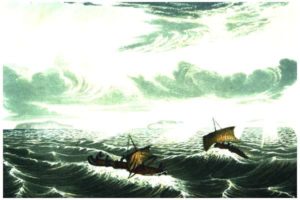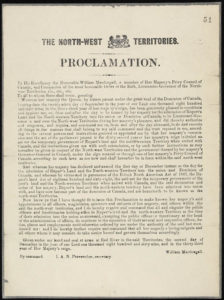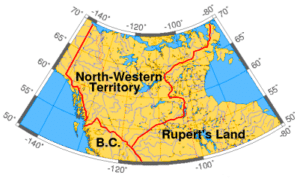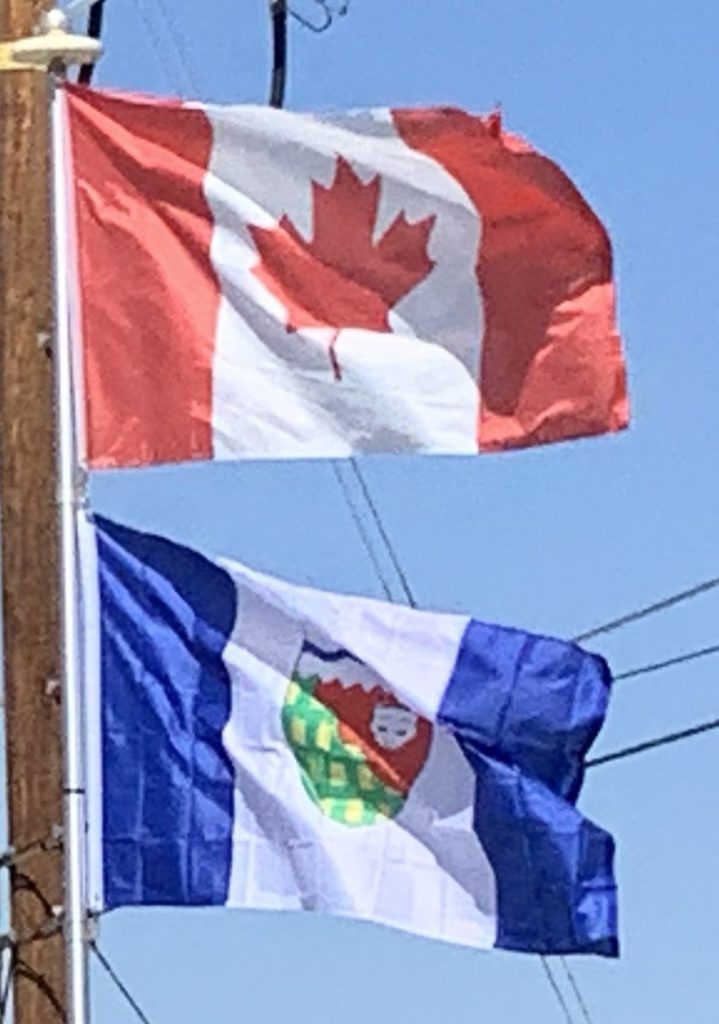In 1670, the Hudson’s Bay Company (HBC) was formed from a royal charter, and was granted a commercial monopoly over Rupert’s Land. Present day Northwest Territories laid northwest of Rupert’s Land, known as the North-Western Territory. Although not formally part of Rupert’s Land, the HBC made regular use of the region as a part of its trading area. The Treaty of Utrecht saw the British became the only European power with practical access to the North-Western Territory, with the French surrendering its claim to the Hudson Bay coast.
Europeans have visited the region for the purposes of fur trading, and exploration for new trade routes, including the Northwest Passage. Arctic expeditions launched in the 19th century include the Coppermine expedition.

In 1867, first Canadian residential school opened in the region in Fort Resolution. The opening of the school was followed by several others in regions across the territory, thus contributing to the it reaching the highest percentage of students in residential schools compared to other area in Canada.
The present-day territory came under the authority of the Government of Canada in July 1870, after the Hudson’s Bay Company transferred Rupert’s Land and the North-Western Territory to the British Crown, which subsequently transferred them to Canada, giving it the name the North-west Territories.

This immense region comprised all of today’s Canada except that which was encompassed within the early signers of Canadian Confederation, that is, British Columbia, early forms of present-day Ontario and Quebec (which encompassed the coast of the Great Lakes, the Saint Lawrence River valley and the southern third of Quebec), the Maritimes (NS, PEI and NB), Newfoundland, the Labrador coast, and the Arctic Islands, except the southern half of Baffin Island (the Arctic Islands remained under direct British claim until 1880).
After the 1870 transfer, some of the North-West Territories was whittled away. The province of Manitoba was created on July 15, 1870, at first a small square area around Winnipeg, and then enlarged in 1881 to a rectangular region composing the modern province’s south. By the time British Columbia joined Confederation on July 20, 1871, it had already (1866) been granted the portion of North-Western Territory south of 60 degrees north and west of 120 degrees west, an area that comprised most of the Stickeen Territories.

In the meantime, the Province of Ontario was enlarged northwestward in 1882. Quebec was also extended northwards in 1898. Yukon was made a separate territory that year, due to the Klondike Gold Rush, to free the North-west Territories government in Regina from the burden of addressing the problems caused by the sudden boom of population and economic activity, and the influx of non-Canadians. The provinces of Alberta and Saskatchewan were created in 1905. In 1906, the Parliament of Canada renamed the “North-West Territories” as the Northwest Territories, dropping all hyphenated forms of it.
Manitoba, Ontario and Quebec acquired the last addition to their modern landmass from the Northwest Territories in 1912. This left only the districts of Mackenzie, Franklin (which absorbed the remnants of Ungava in 1920) and Keewatin within what was then given the name Northwest Territories. In 1925, the boundaries of the Northwest Territories were extended all the way to the North Pole on the sector principle, vastly expanding its territory onto the northern ice cap. Between 1925 and 1999, the Northwest Territories covered a land area of 3,439,296 square kilometers, larger than India.
